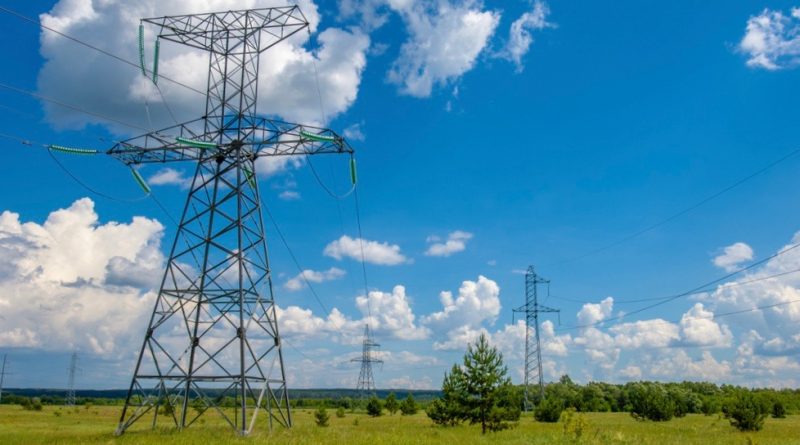Opinion: How To Reduce U.S. Emissions 70%-80% by 2035

Photo: Sergei Mishchenko

Is it really possible that the United States could reduce its greenhouse gas emissions by 70% – 80% by 2035? A newly published detailed study of energy sources and needs, production capacity, jobs, and finance from “Rewiring America” says it is. MacArthur “genius” grant recipient, Saul Griffith, and his team have found that not only is it possible technologically, but that the national mobilization required to bring it about would create 15 million to 20 million jobs in the next decade and 5 million permanent jobs after that.
Remarkably, they provide a blueprint of how this could be done using existing technology, including people of all income levels, without requiring outlandish sums from the federal budget, without requiring a sacrifices in our standard of living (more on that another time), with financial benefits for consumers even in the short run, and with improved public health benefits. In a sense, this is the roadmap for how the challenging goals of the Green New Deal can be accomplished, if we can build massive public demand for them.
How To Get A Rapid Transition
How Rewiring America envisions this is worth exploring. First, they don’t rely primarily on market forces. The so-called invisible hand of the free market simply operates too slowly for this type of rapid energy transition. What is needed, they say, is a World War II type mobilization that bends the full resources of the U.S. economy toward manufacturing the needed clean-energy technology and infrastructure. As David Roberts, of Vox, describes it, this “entails government taking a direct hand in industry, working with it to hit specific production targets through some mix of incentives, penalties, and mandates.”
While this may seem unlikely in today’s political climate, the U.S. has risen to such a challenge before. Instead of wartime sacrifices, this mobilization will bring immediate benefits and reduced costs to families. The WWII mobilization created a large middle class and led to decades of sustained prosperity. A new mobilization can too. Much of FDR’s New Deal was driven by widespread social movements demanding even more radical solutions. A climate-driven economic mobilization of the magnitude envisioned by Rewiring America will similarly require a massive, multi-racial social movement demanding that we face our crises in climate, racial justice and employment simultaneously, with bold action.
Electrify Everything
What would such an energy transition require? The key is to produce electricity without carbon emissions and then electrify everything – transportation, heating and cooling, and most industrial production. Five existing technologies are key: wind and solar power plants, rooftop solar, electric vehicles, heat pumps, and batteries. Griffith has carefully modeled the capacity of our economy and finds it equal to the task, given appropriate direction. He says it will require a 3-5 year aggressive production ramp-up, followed by 10 years of intensive deployment of decarbonized infrastructure and technology. It will require that every time a fossil fuel device or system needs to be replaced or significantly repaired, that it be replaced with an electric one — mandated 100% replacement with clean energy technology. It will require a three to four fold increase in the electric grid to service all the new electric vehicles, heat pumps, etc.
Surprisingly, in Griffith’s model all this can be accomplished by 2035 without significant lifestyle changes. Even without significant increases in building insulation, carbon sequestration, or downsizing of homes or vehicles, we can, with full electrification, reduce carbon emissions 70% – 80% in the United States. Those things are all important, of course, but in Griffith’s model they are not necessary to achieve the emission reduction goal. Thus, this massive mobilization will bring benefits, not sacrifice, to consumers as well as to the planet. Surely this will help build public support.
How Do We Pay For It?
How will we pay for this project of switching the entire country from fossil fuels to renewables and electrification? “If done right, fixing the climate crisis can save everyone money,” Griffiths writes. He and his colleagues have meticulously worked out the numbers and found that if low interest loans were available to all, people’s energy cost savings from electrifying their homes (and other buildings) would be greater than the cost of paying back the loans. On average, households would come out almost $2000 ahead each year, having put virtually nothing down.
Griffiths explains that renewables and electrification could be financed this way with private capital, if the federal government were to guarantee the loans. This is the way the post-WWII housing boom was created — by federally backed low-interest mortgages. He calculates the total cost to the federal budget of this whole mobilization at $250 billion to $350 billion per year. This is well within the amount that Biden’s latest climate plan proposes spending. In the Rewiring model, much of this would go to modernizing the electric grid.
Many Benefits
The idea of a WWII-type mobilization to respond to the climate crisis is not new. What is new is the level of detail of exactly what it will require, the well-researched finding that it will provide 15-20 million new jobs, innovative approaches to financing it all, and knowing that it is still possible after all our delays. The benefits are far-reaching. To quote David Roberts again, “Homes could be more comfortable, cities could be quieter, the air could be cleaner, power could be more reliable, energy costs could be lower, and front-line communities could be free of the burden of living next to and suffering disproportionately from fossil fuel infrastructure.” The U.S. could be a more equitable, prosperous, healthy, and pleasant place to live.
Only With A Powerful Mass Movement
The Rewiring America report provides a technical solution to the U.S. role in climate change. It’s reassuring and useful to know that all this is possible, but the real problem of climate change has always been a lack of political will – the lack of a popular movement large enough to force government to do what needs to be done. We will never get the political will we need — the movement we need — without challenging the power, wealth, and domination of the 1%, who continue to profit from climate inaction. To end their domination of our economy and politics we must dismantle racism — the primary tool by which they divide the rest of us and get us to fight each other, rather than challenging them and their tremendous wealth and selfish power. (See my post “What’s Race Got to Do with It?“)
Any vision of the U.S. mobilizing to address climate change in a big way must include a new sense of us all being-in-this-together. We must change our relationships and how we see each other, if we want to change how we are destroying the climate. We must uncover our ability to care for each other and to care that everyone has a good life. Only then will we be able to unite in caring for the planet, so it can be a safe and sustainable home for everyone.
Russ Vernon-Jones
Russ Vernon-Jones was the Principal of Fort River Elementary School from 1990-2008. He is a co-facilitator of the Coming Together Anti-Racism Project in the Amherst area. He co-chairs the Racism-Climate Change Connections working group of Climate Action Now of Western Mass, and blogs regularly on climate justice at www.RussVernonJones.org.
